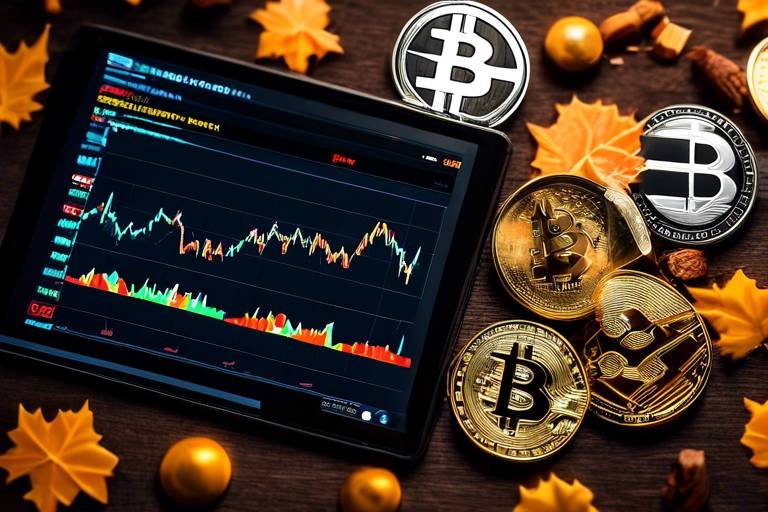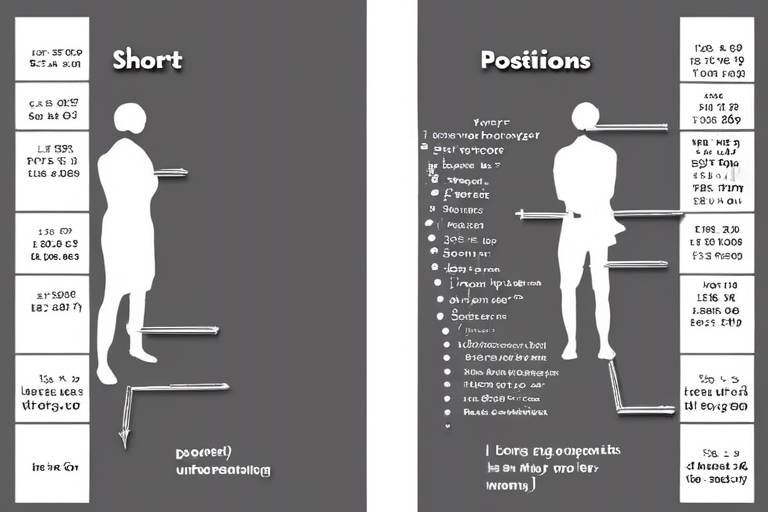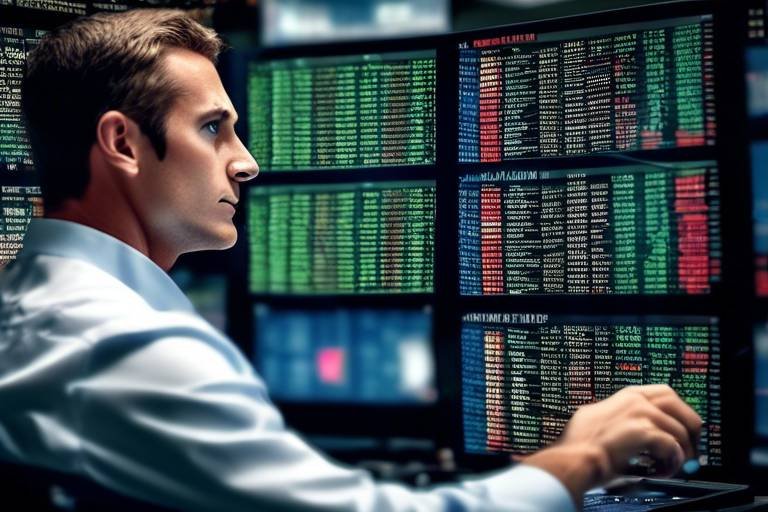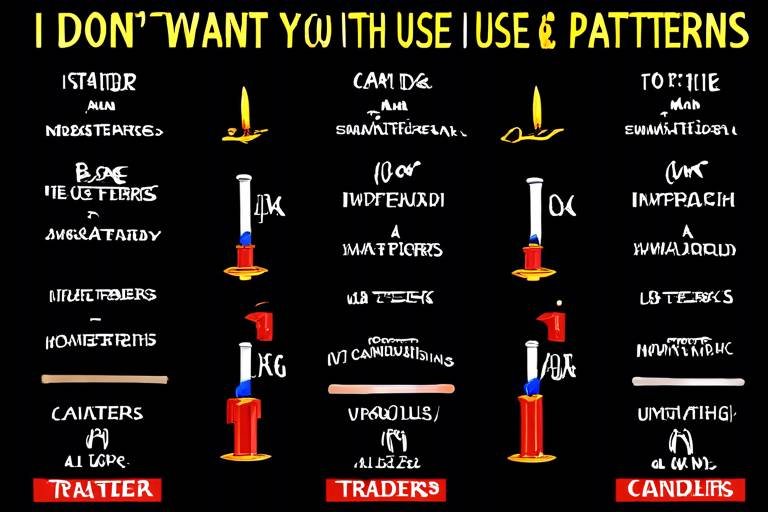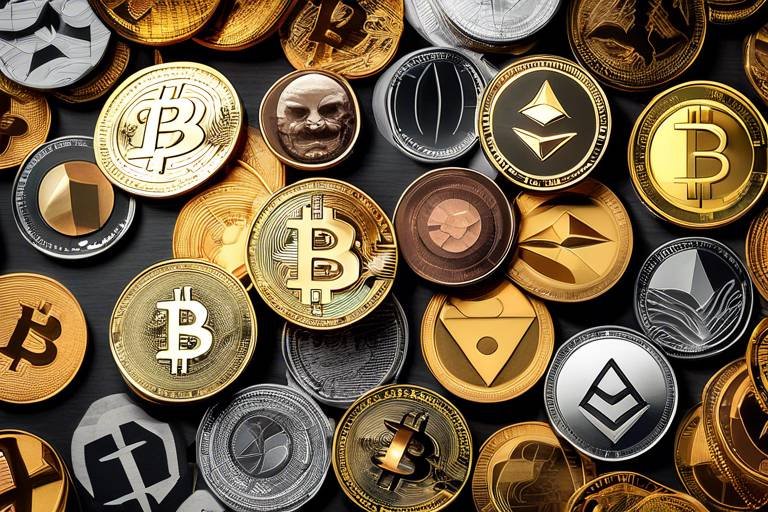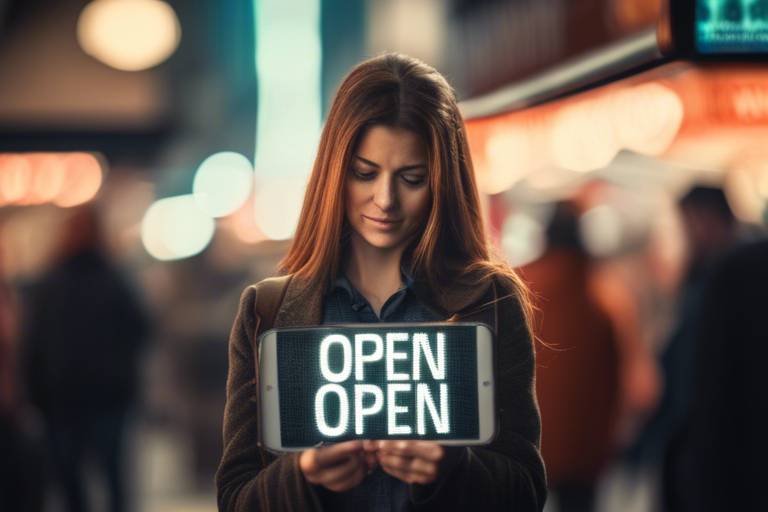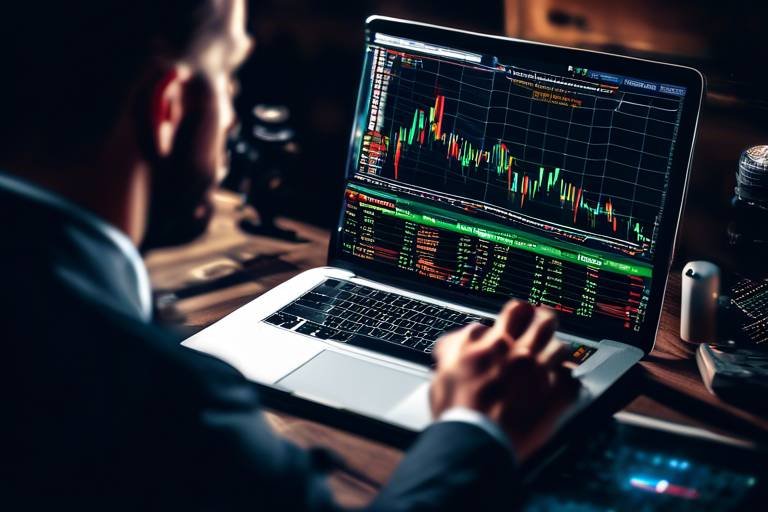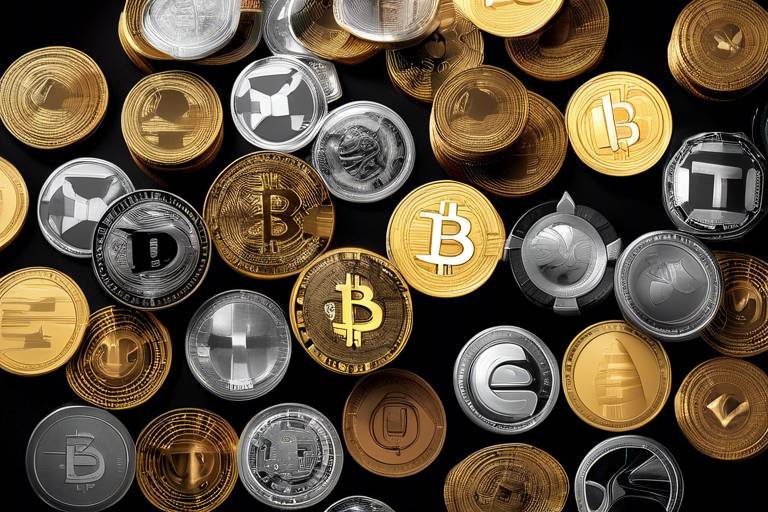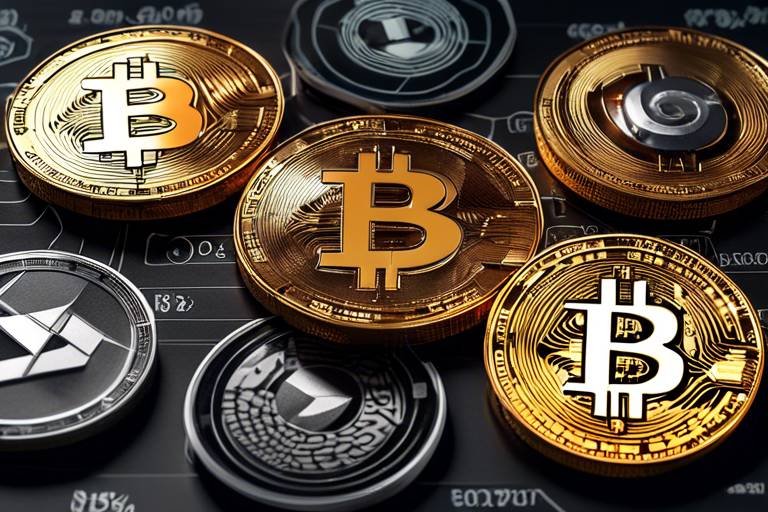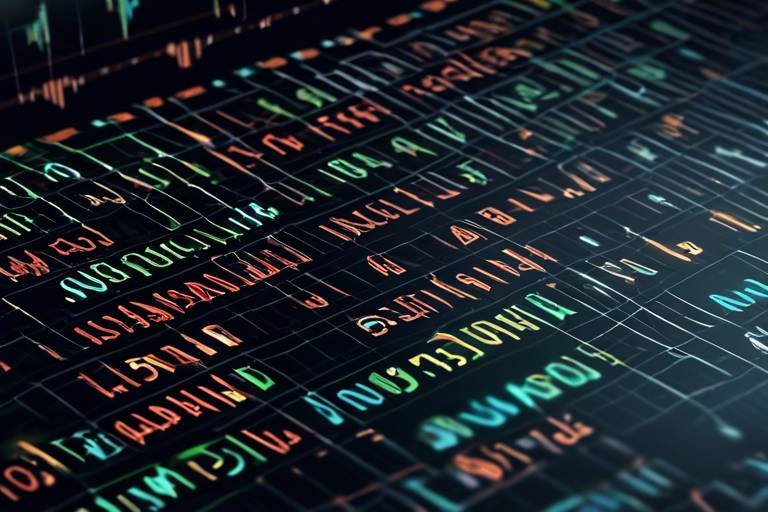How to Create a Strategy for Trading NFTs
Are you ready to dive into the exciting world of non-fungible tokens (NFTs)? If so, you’re in for a wild ride! Trading NFTs isn’t just about buying and selling digital art; it’s about understanding a whole new economy that’s rapidly evolving right before our eyes. The beauty of NFTs lies in their uniqueness and the potential for significant returns on investment. But, like any investment, jumping in without a strategy can lead to disappointment. So, how do you create a solid strategy for trading NFTs? Let’s break it down step by step.
First and foremost, it's essential to understand what NFTs are and how they function within the digital landscape. NFTs are unique digital assets verified using blockchain technology, which means they can’t be replicated. This uniqueness is what gives them value. But remember, not all NFTs are created equal! Some may be highly sought after, while others may not hold much value at all. Knowing the differences can significantly impact your trading decisions.
Next, let’s talk about market analysis techniques. Trading NFTs is much like trading stocks or cryptocurrencies. You need to analyze the market to make informed decisions. This includes technical analysis, where you look at past price movements and chart patterns, and sentiment analysis, which gauges the mood of the market through social media and community discussions. By combining these analyses, you can better predict future trends and make strategic trades.
To effectively trade NFTs, you must first grasp their significance in the digital economy. NFTs represent ownership of digital items, ranging from art to music to virtual real estate. They’re revolutionizing how we think about ownership and value in the digital age. Imagine owning a piece of art that is one-of-a-kind, verified by blockchain—this is what NFTs offer. The market is booming, but it is also volatile. So, arming yourself with knowledge is crucial.
When it comes to trading NFTs, market analysis is your best friend. By understanding the trends and movements, you can make smarter decisions. Let’s look at two primary methods: technical analysis and sentiment analysis.
Technical analysis involves examining price charts and identifying patterns that can predict future movements. For instance, certain chart patterns like head and shoulders or double tops can indicate potential reversals in price trends. By recognizing these patterns, you can enhance your trading strategy.
Common chart patterns in NFT trading include:
- Head and Shoulders: Indicates a reversal pattern.
- Double Tops: Suggests a potential downtrend.
- Triangles: Can signal continuation or reversal.
There are several indicators and tools available to help you analyze NFT markets effectively. For example, moving averages can smooth out price data, while RSI (Relative Strength Index) can indicate whether an asset is overbought or oversold. Utilizing these tools can give you an edge in your trading strategy.
Sentiment analysis is all about understanding the mood of the market. By monitoring social media platforms, forums, and community discussions, you can gauge how traders feel about specific NFTs or the market as a whole. This insight can be invaluable, as it often precedes price movements. Are people excited about a new artist? Is there a buzz around a specific NFT drop? These are the clues you need to watch for.
Now that you have a grasp on market analysis, let’s discuss risk management. In the world of NFTs, where prices can swing wildly, having a solid risk management strategy is crucial. You want to protect your investments while maximizing gains.
Diversifying your NFT portfolio is a smart move. Just like in traditional investing, spreading your investments across different assets can reduce risk. Instead of putting all your eggs in one basket, consider investing in various types of NFTs—art, music, virtual real estate, and more. This way, if one asset underperforms, others may balance it out.
Another effective strategy is setting stop-loss orders. This allows you to automatically sell an NFT if it falls below a certain price, limiting your losses. It’s a great way to maintain control over your investments and helps prevent emotional decision-making during market fluctuations.
Choosing the right NFT marketplace is critical for your trading success. Each platform has its own fees, user experience, and community engagement levels. Some popular NFT marketplaces include OpenSea, Rarible, and Foundation. Take the time to explore these platforms and find one that suits your trading style.
Don’t underestimate the power of community in NFT trading! Engaging with fellow traders and artists can provide valuable insights and networking opportunities. Join forums, participate in discussions, and attend virtual events. Building relationships in the NFT space can lead to collaborations and help you stay informed about the latest trends.
Finally, keeping up with the latest trends in the NFT space is vital. Follow industry news, subscribe to newsletters, and engage with thought leaders on social media. The NFT landscape is ever-changing, and being informed will help you adapt your trading strategies accordingly.
Q: What are NFTs?
A: NFTs are unique digital assets verified on the blockchain, representing ownership of various digital items.
Q: How can I start trading NFTs?
A: Begin by researching the market, understanding different types of NFTs, and selecting a suitable marketplace.
Q: What are the risks of trading NFTs?
A: The NFT market is volatile, and prices can fluctuate dramatically, so it's essential to have a risk management strategy in place.
Q: How can I determine the value of an NFT?
A: The value of an NFT can be influenced by factors such as rarity, demand, and the reputation of the creator.

Understanding NFTs
Non-fungible tokens, or NFTs, are a fascinating innovation in the realm of digital assets. Unlike traditional cryptocurrencies such as Bitcoin or Ethereum, which are fungible and can be exchanged on a one-to-one basis, NFTs are unique digital items that cannot be replicated. Think of them as digital collectibles, akin to rare baseball cards or limited edition art pieces. Each NFT is stored on a blockchain, which ensures its authenticity and ownership. This technology not only guarantees that the digital item is one-of-a-kind but also provides a transparent ledger of all transactions associated with it.
The significance of NFTs in the digital economy is immense. With the rise of the internet and digital content, creators are seeking new ways to monetize their work. NFTs offer a solution by allowing artists, musicians, and other creators to sell their digital creations directly to consumers without the need for intermediaries. This shift empowers creators, giving them more control over their work and the potential for higher profits. Additionally, NFTs have opened up new revenue streams through royalties, where creators can earn a percentage every time their digital asset is resold.
But what exactly can be represented as an NFT? The possibilities are virtually limitless! Here are some examples:
- Digital Art: Artists can tokenize their artwork, ensuring each piece is unique and verifiable.
- Music: Musicians can sell exclusive tracks or albums as NFTs, providing fans with unique ownership.
- Virtual Real Estate: In virtual worlds, users can buy, sell, and trade parcels of land as NFTs.
- Collectibles: From trading cards to virtual pets, NFTs can represent any collectible item.
As NFTs continue to gain traction, it's important to understand their value proposition. The worth of an NFT is often determined by various factors, including its rarity, the reputation of the creator, and the demand within the market. Just like in traditional art markets, where a piece's value can fluctuate based on trends and collector interest, NFTs are subject to similar dynamics. This makes them an exciting yet volatile investment opportunity.
In conclusion, understanding NFTs is crucial for anyone looking to navigate this vibrant and rapidly evolving market. With their unique characteristics and potential for value appreciation, NFTs represent a new frontier in digital ownership. As we delve deeper into trading strategies, market analysis, and risk management, keeping the fundamentals of NFTs in mind will be essential for making informed decisions in this thrilling space.

Market Analysis Techniques
When it comes to trading NFTs, understanding is your secret weapon. Just like a captain navigating through stormy seas, you need to have a clear understanding of the waters you’re sailing in. The NFT market can be as unpredictable as a roller coaster ride, filled with ups and downs, and being equipped with the right analysis tools can help you stay ahead of the curve. There are two primary methods that traders often rely on: technical analysis and sentiment analysis. Each of these approaches offers unique insights that can significantly influence your trading decisions.
Technical analysis is like reading the pulse of the market. It involves examining historical price movements and trading volumes to forecast future price trends. Think of it as studying the footprints left behind by previous traders to predict where the crowd might head next. By analyzing charts, traders can identify patterns that often repeat, allowing them to make informed decisions. Here are a few key components of technical analysis:
- Chart Patterns: These are formations created by the price movements of NFTs over time. Recognizing patterns such as head and shoulders or double tops can give you a significant edge in predicting price movements.
- Indicators and Tools: Various indicators like moving averages, Relative Strength Index (RSI), and MACD (Moving Average Convergence Divergence) can help you gauge market trends and potential reversal points. These tools serve as your compass, guiding you through the chaotic waters of NFT trading.
Chart patterns are like the language of the market, speaking volumes about trader psychology. For example, the head and shoulders pattern often indicates a reversal, signaling that it might be time to sell. On the other hand, a double bottom pattern can hint at a bullish trend, suggesting that it’s a good time to buy. By mastering these patterns, you can enhance your trading strategy and make decisions that are not just based on gut feelings but solid analysis.
Utilizing indicators is akin to having a toolkit at your disposal. Each tool serves a specific purpose, helping you analyze the market from different angles. For instance, moving averages can smooth out price data to identify trends over a specified period, while RSI can help you determine whether an asset is overbought or oversold. By combining these tools, you can create a robust analysis framework that allows you to spot potential buy and sell signals effectively.
While technical analysis focuses on numbers and patterns, sentiment analysis dives into the emotional side of trading. It’s all about understanding the mood of the market—what traders are feeling and saying. Social media platforms like Twitter, Reddit, and Discord can be gold mines for sentiment analysis. By monitoring discussions and trends, you can gauge the collective mindset of the NFT community. Are traders feeling bullish, or is there a wave of pessimism? This insight can provide you with valuable information about potential price movements.
In summary, mastering market analysis techniques is crucial for anyone looking to succeed in the NFT trading arena. By combining technical analysis with sentiment analysis, you can create a well-rounded strategy that not only considers historical data but also the emotional climate of the market. Remember, in the fast-paced world of NFTs, knowledge is power, and staying informed can make all the difference between a successful trade and a missed opportunity.

Technical Analysis
When diving into the world of NFT trading, serves as a powerful compass, guiding traders through the often turbulent waters of the market. Just like a seasoned sailor uses charts to navigate the seas, traders utilize technical analysis to interpret price movements and predict future trends. It involves studying historical price data, chart patterns, and various indicators to make informed decisions. So, how exactly does one harness the power of technical analysis to gain an edge in NFT trading?
First and foremost, it’s essential to familiarize yourself with chart patterns. These patterns are like the fingerprints of the market, revealing the behavior of buyers and sellers over time. For instance, the head and shoulders pattern often signals a potential reversal in price direction, while a double top might indicate a strong resistance level. Recognizing these patterns can significantly enhance your trading strategy. Imagine you’re at a party, and you notice certain behaviors repeating among the guests; that’s akin to identifying chart patterns in trading!
Next up, we have indicators and tools. These are the instruments that help traders gauge market momentum and volatility. Popular indicators include the Relative Strength Index (RSI) and Moving Averages (MA). The RSI, for instance, measures the speed and change of price movements, helping traders identify overbought or oversold conditions. On the other hand, Moving Averages smooth out price data to identify trends over a specific timeframe. By combining these tools, traders can create a robust strategy that adapts to changing market conditions.
To illustrate how these elements come together, let’s look at a simple table that summarizes some common chart patterns and their implications:
| Chart Pattern | Implication |
|---|---|
| Head and Shoulders | Potential trend reversal |
| Double Top | Strong resistance level |
| Ascending Triangle | Potential bullish breakout |
| Descending Triangle | Potential bearish breakout |
By understanding these patterns and utilizing indicators, traders can make strategic decisions that align with market trends. However, it’s crucial to remember that technical analysis isn’t foolproof. It’s more like a weather forecast; while it can provide insights, unexpected changes can still occur. Therefore, combining technical analysis with other strategies, such as sentiment analysis and risk management, can create a more holistic approach to trading NFTs.
In conclusion, mastering technical analysis takes practice and patience. Just as a musician perfects their craft through repetition, traders must continually analyze and adapt their strategies based on market behavior. So, grab your charts, familiarize yourself with those patterns, and prepare to navigate the exciting world of NFT trading with confidence!
- What is technical analysis in NFT trading?
Technical analysis involves studying historical price data, chart patterns, and indicators to predict future price movements in the NFT market. - How can I identify chart patterns?
By studying price charts and recognizing recurring formations, traders can identify patterns like head and shoulders or double tops. - What indicators should I use for NFT trading?
Common indicators include the Relative Strength Index (RSI) and Moving Averages (MA), which help gauge market momentum and trends. - Is technical analysis always accurate?
No, while it provides valuable insights, unexpected market changes can still occur, so it’s best used in conjunction with other strategies.

Chart Patterns
When it comes to trading NFTs, understanding is like having a treasure map in a vast ocean of digital assets. These patterns act as visual cues, helping traders to predict future price movements based on historical data. Just like a seasoned detective examining clues, you can use these patterns to make informed decisions about when to buy or sell your NFTs.
Two of the most common chart patterns you'll encounter are the head and shoulders and the double tops. The head and shoulders pattern is often seen as a reversal signal, indicating that a bullish trend may be coming to an end. Imagine climbing a mountain where the peak represents the 'head,' flanked by two smaller peaks representing the 'shoulders.' Once you recognize this pattern, it can serve as a warning sign to consider selling before a potential downturn.
On the other hand, the double top pattern signals a potential reversal from a bullish trend to a bearish one. Picture it as two peaks that reach the same height, resembling a 'M' shape. When you spot this pattern, it might be time to reassess your position. But remember, no pattern is foolproof, and relying solely on them can lead to pitfalls.
To enhance your trading strategy, it’s essential to combine these patterns with other analytical tools and indicators. For instance, moving averages and volume analysis can provide additional context to the patterns you identify. A common approach is to look for confirmation signals, such as a price break below the neckline of the head and shoulders pattern or a drop in volume during a double top formation. This multifaceted approach can significantly improve your decision-making process.
In summary, mastering chart patterns is crucial for anyone looking to navigate the NFT trading landscape effectively. By recognizing these patterns and understanding their implications, you can position yourself to make smarter trades and potentially increase your profits. Just like a skilled chess player anticipates their opponent’s moves, you too can gain a strategic edge in the ever-evolving world of NFTs.

Indicators and Tools
When it comes to trading NFTs, having the right at your disposal can make a world of difference. Think of these tools as your trusty compass and map in the vast ocean of the NFT marketplace. They guide you through the waves of volatility and help you navigate toward profitable shores. So, what are some of the essential indicators and tools you should consider integrating into your trading strategy?
First off, let’s talk about volume indicators. Volume is a crucial metric in any trading environment, and NFTs are no exception. By analyzing trading volume, you can gauge the strength of a price movement. For instance, if an NFT experiences a price surge accompanied by high trading volume, it may indicate strong interest and a potential upward trend. Conversely, a price increase with low volume might suggest a lack of conviction in the move, signaling caution.
Another vital tool is the Moving Average (MA). This indicator smooths out price data to identify trends over a specific period. For NFT trading, you might use short-term moving averages (like the 5-day or 10-day MA) to spot quick trends, while longer moving averages (like the 50-day or 200-day MA) can help you identify more significant trends. When the short-term MA crosses above the long-term MA, it’s often seen as a bullish signal, while the opposite can signal a bearish trend.
Additionally, incorporating Relative Strength Index (RSI) can be incredibly beneficial. The RSI measures the speed and change of price movements, helping traders identify overbought or oversold conditions. An RSI above 70 typically indicates that an NFT is overbought and may be due for a price correction, while an RSI below 30 suggests that it’s oversold and could be a buying opportunity. Using RSI in conjunction with other indicators can provide a more comprehensive view of market conditions.
Don't overlook the importance of charting tools. Many platforms offer advanced charting capabilities that allow you to visualize price movements and patterns. Familiarizing yourself with these tools can enhance your ability to spot trends and make informed decisions. For example, platforms like TradingView provide access to a plethora of tools for technical analysis, including customizable charts and a wide range of indicators.
Lastly, consider leveraging social sentiment analysis tools. Platforms like LunarCrush or Social Sentiment analyze social media trends and discussions around NFTs. Understanding the community sentiment can offer invaluable insights into potential price movements and the overall market mood. After all, in the world of NFTs, community engagement can significantly impact an asset's value.
In conclusion, utilizing the right indicators and tools can significantly enhance your NFT trading strategy. By combining volume indicators, moving averages, RSI, advanced charting tools, and sentiment analysis, you can create a well-rounded approach that helps you make informed decisions. Just remember, while these tools are powerful, they should be used in conjunction with sound judgment and a solid understanding of the market.
- What are the best indicators for NFT trading? The best indicators include volume indicators, moving averages, and the Relative Strength Index (RSI).
- How can I analyze market sentiment for NFTs? You can analyze market sentiment by using social sentiment analysis tools that track discussions on platforms like Twitter, Discord, and Reddit.
- Are there any specific tools recommended for beginners? Beginners might find platforms like TradingView and LunarCrush user-friendly for charting and sentiment analysis.

Sentiment Analysis
When it comes to trading NFTs, understanding the market sentiment is like having a secret weapon in your trading arsenal. It's not just about numbers and charts; it's about the emotions and opinions of the people behind those transactions. So, how do you tap into this elusive sentiment? Well, let’s dive in!
First off, sentiment analysis involves examining social media trends and community discussions to gauge how traders and collectors feel about specific NFTs or the market in general. Platforms like Twitter, Discord, and Reddit are treasure troves of information. You can find passionate discussions, emerging trends, and even warnings about potential scams. By monitoring these platforms, you can get a feel for the buzz surrounding certain projects, which can significantly influence price movements.
For instance, if you notice a surge in positive tweets about a particular NFT collection, it could signal that demand is about to spike. Conversely, a wave of negative sentiment might indicate that it’s time to reconsider your investments. Think of it as tuning into the heartbeat of the NFT community. The more in sync you are with the collective mood, the better equipped you'll be to make informed decisions.
Moreover, sentiment analysis isn’t just about the quantity of posts; it’s also about the quality. Look for influential figures in the NFT space—artists, collectors, and thought leaders. Their opinions can sway the market, so understanding their sentiments can provide critical insights. For example, if a well-known artist tweets their support for a new collection, that could lead to a rush of buyers eager to jump on the bandwagon.
To make the most of sentiment analysis, consider using various tools and platforms that aggregate social media data. Some popular tools include:
- Google Trends: Helps you see the popularity of specific search terms over time.
- Social Media Monitoring Tools: Platforms like Hootsuite or Brandwatch can track mentions and sentiment across multiple channels.
- Sentiment Analysis Software: Use algorithms and AI to analyze the emotional tone of social media posts related to NFTs.
In summary, sentiment analysis is a powerful tool for NFT traders. By keeping your finger on the pulse of the community, you can better predict price movements and make strategic decisions. Remember, the NFT market is as much about the people as it is about the assets. So, engage with the community, listen to the chatter, and let the collective wisdom guide your trading strategy!
Q: What is sentiment analysis in NFT trading?
A: Sentiment analysis in NFT trading involves assessing public opinions and emotions about NFTs through social media and community discussions to predict market trends.
Q: How can I measure market sentiment?
A: You can measure market sentiment by monitoring social media platforms, using sentiment analysis tools, and paying attention to discussions among influential figures in the NFT space.
Q: Why is sentiment analysis important?
A: Sentiment analysis is important because it helps traders understand the emotional dynamics of the market, which can lead to more informed trading decisions and potentially higher profits.
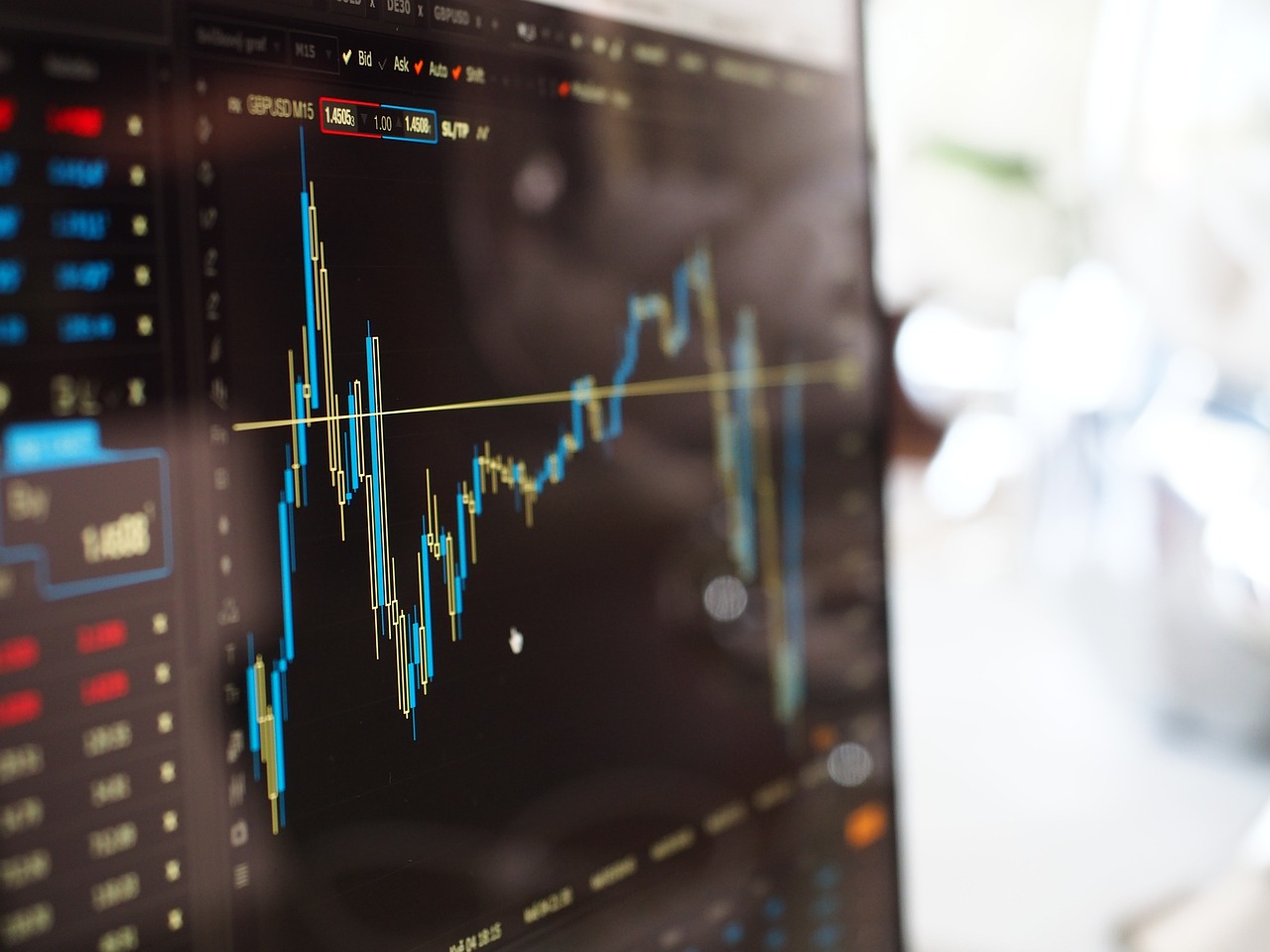
Risk Management Strategies
When diving into the world of NFTs, the thrill of the chase can often overshadow the necessity of having a solid risk management strategy. Picture this: you're at an auction, your heart races as the bids climb, and in a moment of excitement, you might forget about the financial implications of your decisions. This is where risk management comes into play. It's not just about avoiding losses; it's about protecting your investments and ensuring that your trading journey remains sustainable in the long run.
One of the most effective risk management techniques is diversification. Think of it as not putting all your eggs in one basket. By spreading your investments across various NFTs, you can mitigate the impact of a single asset's poor performance. For instance, if you invest in digital art, collectibles, and virtual real estate, a downturn in one category may not significantly affect your overall portfolio. Diversification allows you to balance potential risks and rewards, creating a more stable financial environment for your trading activities.
Another crucial strategy is the use of stop-loss orders. Imagine you’ve purchased an NFT that you believe will skyrocket in value, but the market takes an unexpected turn. A stop-loss order acts like a safety net, automatically selling your NFT once it drops to a predetermined price. This way, you can limit your losses without having to constantly monitor the market. It’s a powerful tool that not only protects your capital but also helps you avoid emotional decision-making during turbulent market conditions.
In addition to these strategies, it's essential to stay informed about market trends. The NFT space is ever-evolving, and what was hot yesterday might not be tomorrow. Regularly reviewing your portfolio and adjusting your strategies based on market changes can help you stay ahead of the curve. Consider setting aside time each week to analyze your investments, read industry news, and engage with the community. This proactive approach can significantly enhance your risk management efforts.
Lastly, always remember to keep your emotions in check. Trading can be exhilarating, but letting emotions drive your decisions can lead to rash choices and significant losses. Establishing a clear trading plan with defined entry and exit points can help you stay focused and disciplined. Stick to your plan, and don't let fear or greed dictate your actions.
- What is risk management in NFT trading?
Risk management in NFT trading involves strategies to minimize potential losses while maximizing gains. It includes techniques like diversification and setting stop-loss orders. - How does diversification work?
Diversification spreads your investments across different assets to reduce risk. By having a varied portfolio, the poor performance of one asset can be offset by the stability or gains of others. - What is a stop-loss order?
A stop-loss order is an automatic sell order that triggers when an NFT reaches a certain price point, helping you limit losses without constant market monitoring. - Why is emotional control important in trading?
Emotional control prevents impulsive decisions driven by fear or greed, allowing traders to stick to their strategies and make rational choices.

Diversification
Diversification is a fundamental principle in investment strategy, and when it comes to trading NFTs, it becomes even more critical. Imagine you're at a buffet, and instead of piling your plate high with just one dish, you sample a bit of everything. This approach minimizes the risk of being disappointed by a single dish, just as diversifying your NFT portfolio helps mitigate the risk of a poor-performing asset. By spreading your investments across various types of NFTs, such as digital art, music, virtual real estate, and collectibles, you can better position yourself to weather the unpredictable nature of the market.
When considering diversification in your NFT investments, think about the different categories available. Each category can behave differently under market conditions, allowing you to balance your risk. Here are a few categories to consider:
- Art NFTs: Unique digital artworks that can appreciate in value based on the artist's reputation and market demand.
- Collectibles: Digital items that can be traded, such as virtual trading cards or in-game assets.
- Music NFTs: Songs and albums sold as NFTs, which can gain value as the artist's popularity grows.
- Virtual Real Estate: Plots of land in virtual worlds, which can appreciate significantly as these platforms grow.
By investing in a mix of these categories, you can reduce the impact of a downturn in any single area. For instance, if the digital art market experiences a slump, your investments in virtual real estate may still perform well, balancing out your overall portfolio. This strategy not only helps in minimizing losses but also opens up opportunities for gains across different sectors.
Moreover, diversification isn’t just about choosing different categories; it also involves selecting NFTs from various creators and platforms. Just as you would diversify your stock portfolio by investing in different industries, consider supporting a range of artists and projects. This approach not only spreads your risk but also helps you tap into emerging trends and talents within the NFT space.
In conclusion, embracing diversification in your NFT trading strategy is akin to casting a wide net in a vast ocean. By not limiting yourself to a single type of asset, you increase your chances of catching valuable opportunities while minimizing the risk of significant losses. Remember, the NFT market is still evolving, and those who adapt their strategies to include diversification will likely find themselves better equipped to navigate its twists and turns.
Q1: Why is diversification important in NFT trading?
A1: Diversification helps mitigate risks by spreading investments across different types of NFTs, which can perform differently under various market conditions.
Q2: How can I diversify my NFT portfolio?
A2: You can diversify by investing in various categories of NFTs, such as art, collectibles, music, and virtual real estate, as well as supporting different artists and projects.
Q3: Is it possible to over-diversify my NFT investments?
A3: Yes, over-diversification can lead to a diluted portfolio where it becomes challenging to track performance. It's essential to find a balance that allows for risk management without losing focus on key investments.

Setting Stop-Loss Orders
When it comes to trading NFTs, one of the most effective strategies for protecting your investments is setting stop-loss orders. Imagine you're on a roller coaster, and you feel that sudden drop; the last thing you want is to be unprepared for it. A stop-loss order acts as your safety harness in the unpredictable world of NFT trading. It’s designed to limit your losses by automatically selling your asset when it reaches a certain price point. This way, you can enjoy the ride without worrying about catastrophic losses.
So, how do you go about setting these orders? First, you need to determine your risk tolerance. This means figuring out how much you're willing to lose on a particular NFT before you decide to cut your losses. For instance, if you purchase an NFT for $500 and you’re willing to accept a 20% loss, you would set a stop-loss order at $400. This strategy ensures that you don’t lose more than you can handle, allowing you to stay in the game longer.
Another critical aspect of setting stop-loss orders is choosing the right platform that supports this feature. Not all NFT marketplaces provide the same tools for trading, so doing your homework is essential. Here’s a quick comparison of some popular NFT marketplaces and their stop-loss capabilities:
| Marketplace | Stop-Loss Feature | Notes |
|---|---|---|
| OpenSea | No | Manual selling required |
| Rarible | No | Manual selling required |
| LooksRare | Yes | Offers automated trading tools |
| Mintable | Yes | Includes advanced trading features |
As you can see, some platforms offer more sophisticated trading tools than others. If stop-loss orders are a priority for you, consider using a marketplace that supports them. This can save you time and stress, allowing you to focus on finding the next big NFT rather than constantly monitoring your investments.
Finally, remember that while stop-loss orders can help minimize losses, they are not foolproof. Market volatility can sometimes lead to slippage, where your asset sells for less than you anticipated. Therefore, it’s wise to combine stop-loss orders with other risk management strategies, such as diversifying your portfolio and staying informed about market trends. After all, a well-rounded approach is key to successful NFT trading!
- What is a stop-loss order? A stop-loss order is an instruction to sell an asset when it reaches a certain price, designed to limit losses.
- How do I set a stop-loss order? You can set a stop-loss order through your NFT marketplace’s trading interface, specifying the price at which you want to sell.
- Can I change my stop-loss order? Yes, most platforms allow you to modify or cancel your stop-loss orders at any time.
- What happens if the market is very volatile? In highly volatile markets, your stop-loss order might execute at a lower price than expected due to slippage.

Finding the Right Marketplaces
When it comes to trading NFTs, selecting the right marketplace can be the difference between a successful investment and a costly mistake. The NFT ecosystem is diverse, with numerous platforms offering various features, fees, and user experiences. Understanding these differences is crucial for any trader looking to make informed decisions. So, what should you look for in an NFT marketplace?
First and foremost, consider the fees associated with trading on a platform. Different marketplaces have varying fee structures, which can include listing fees, transaction fees, and even withdrawal fees. For instance, some platforms may charge a flat fee per transaction, while others might take a percentage of the sale price. To give you a clearer picture, here's a quick comparison of popular marketplaces:
| Marketplace | Transaction Fee | Listing Fee | Withdrawal Fee |
|---|---|---|---|
| OpenSea | 2.5% | Free | Varies |
| Rarible | 2.5% | Free | Varies |
| Foundation | 5% | By invite only | Free |
| Mintable | 2.5% | Free | Free |
Next, you should assess the user experience of the marketplace. A user-friendly interface can significantly enhance your trading experience. Look for platforms that offer intuitive navigation, easy-to-use tools, and responsive customer support. After all, you don’t want to waste time fumbling through a complicated interface when you could be focusing on your trades!
Another essential factor is the community engagement surrounding the marketplace. Platforms with active communities often provide better insights into trends and upcoming projects. Engaging with fellow traders and artists can lead to valuable networking opportunities. You might even discover hidden gems that aren’t on your radar yet!
Furthermore, consider the types of NFTs available on each marketplace. Some platforms specialize in digital art, while others focus on gaming assets or music. Identifying where your interests lie will help you choose a marketplace that aligns with your trading goals. For example, if you're passionate about digital art, OpenSea and Rarible might be right up your alley due to their vast collections.
Lastly, always keep an eye on security features. The NFT space has seen its fair share of hacks and scams, so it's paramount to choose a marketplace with robust security measures. Look for platforms that offer two-factor authentication, secure wallets, and a transparent history of their security practices.
In summary, finding the right NFT marketplace involves evaluating fees, user experience, community engagement, available assets, and security measures. By taking the time to research and select the right platform, you can set yourself up for a more successful trading journey in the exciting world of NFTs.
- What are the most popular NFT marketplaces? Some of the most popular NFT marketplaces include OpenSea, Rarible, Foundation, and Mintable.
- How do I know if a marketplace is secure? Look for platforms that implement two-factor authentication, have a good reputation, and provide transparent information about their security measures.
- Can I sell NFTs on multiple marketplaces? Yes, many artists and creators choose to list their NFTs on multiple platforms to reach a broader audience.
- Are there any fees for buying NFTs? Yes, most marketplaces charge transaction fees, which can vary significantly from platform to platform.

Building a Community
In the vibrant world of NFTs, is not just a nice-to-have; it’s an absolute game-changer. Think of your NFT trading journey as a thrilling adventure. Just like any great expedition, the more companions you have, the richer the experience becomes. Engaging with fellow traders, artists, and collectors can open doors to new opportunities, insights, and collaborations that you might never stumble upon alone.
So, how do you go about creating this community? First off, consider the platforms where NFT enthusiasts gather. Social media channels like Twitter, Discord, and Reddit are bustling with discussions about the latest trends, upcoming projects, and market analyses. By actively participating in these conversations, you not only gain knowledge but also establish your presence in the community. Remember, the more you share and contribute, the more you’ll be recognized and respected.
Moreover, attending virtual events and webinars can significantly enhance your networking opportunities. These gatherings are often filled with like-minded individuals who share your passion for NFTs. By engaging in discussions, asking questions, and even sharing your own insights, you can forge meaningful connections that may lead to collaborations or even partnerships in the future.
Another vital aspect of community building is supporting fellow artists and traders. Whether it’s sharing their work on your social media, participating in their projects, or simply offering a word of encouragement, every little bit helps. This kind of reciprocity not only strengthens your relationships but also fosters a sense of trust and camaraderie within the community. Remember, in the world of NFTs, relationships can be just as valuable as the tokens themselves.
Finally, don’t underestimate the power of creating your own content. Whether it’s through blogs, videos, or podcasts, sharing your experiences and knowledge can attract others to your circle. This not only positions you as a thought leader but also invites others to engage with you, thus expanding your community further.
In summary, building a community around your NFT trading endeavors is about connection, support, and shared passion. By engaging actively and authentically with others, you can cultivate a network that not only enriches your trading experience but also contributes to the overall growth of the NFT ecosystem.
| Question | Answer |
|---|---|
| What are the best platforms for building an NFT community? | Twitter, Discord, and Reddit are excellent platforms for connecting with other NFT enthusiasts. |
| How can I support fellow artists in the NFT space? | You can support artists by sharing their work, participating in their projects, and providing encouragement. |
| Is it important to create content to build a community? | Yes, creating content helps position you as a thought leader and attracts others to engage with you. |

Staying Informed on Trends
In the ever-evolving world of NFTs, staying informed on the latest trends is not just beneficial; it’s essential for anyone looking to thrive in this dynamic market. The digital landscape is constantly shifting, with new artists emerging, innovative technologies being developed, and market sentiments changing at lightning speed. To navigate this bustling environment successfully, you need to be proactive in your research and engagement.
One of the most effective strategies for keeping your finger on the pulse of the NFT space is to follow key influencers and thought leaders on social media platforms. Twitter, for instance, is a hotbed for NFT discussions, where you can find real-time updates and insights. By curating a list of influential voices in the NFT community, you can gain valuable perspectives that might not be readily available through traditional news outlets.
Additionally, joining dedicated forums and online communities can significantly enhance your understanding of current trends. Platforms such as Discord and Reddit host vibrant discussions where traders and collectors share their experiences, predictions, and tips. Engaging with these communities not only broadens your knowledge but also provides networking opportunities that could lead to potential collaborations or investment insights.
To help you stay organized and informed, consider setting up a personalized news feed. Utilize tools like Google Alerts or RSS feeds to get notifications about new developments in the NFT world. By customizing your alerts with relevant keywords such as "NFT market trends," "digital art news," or "blockchain technology," you can ensure that you receive timely updates that matter to you.
Moreover, attending virtual conferences, webinars, and workshops can be incredibly beneficial. These events often feature industry experts who share their insights and predictions about the future of NFTs. Not only do you gain knowledge, but you also have the chance to ask questions and interact with speakers and other attendees, enriching your understanding of the market even further.
Lastly, don't underestimate the power of continuous learning. Enroll in online courses that focus on NFT trading and blockchain technology. Websites like Coursera and Udemy offer a plethora of resources that can deepen your understanding of the mechanics behind NFTs and their market dynamics. By investing in your education, you’re not just keeping up with trends; you’re positioning yourself as a knowledgeable trader in a competitive landscape.
In conclusion, staying informed about trends in the NFT space is a multifaceted endeavor that requires active participation and continuous learning. By leveraging social media, engaging with communities, setting up news alerts, attending events, and pursuing educational opportunities, you can ensure that you remain ahead of the curve in this exciting and rapidly changing market.
- What are the best platforms for following NFT trends? Twitter, Discord, and Reddit are excellent platforms for real-time updates and community engagement.
- How can I set up alerts for NFT news? Use tools like Google Alerts to receive notifications on specific keywords related to NFTs.
- Are there any recommended online courses for learning about NFTs? Yes, platforms like Coursera and Udemy offer various courses on NFTs and blockchain technology.
- Why is community engagement important in NFT trading? Engaging with communities provides insights, networking opportunities, and a support system that can enhance your trading experience.
Frequently Asked Questions
- What are NFTs and how do they work?
NFTs, or non-fungible tokens, are unique digital assets that represent ownership of a specific item or piece of content on the blockchain. Unlike cryptocurrencies like Bitcoin, which are interchangeable, each NFT has distinct characteristics that make it one-of-a-kind. They can represent anything from digital art and music to virtual real estate and collectibles.
- How can I analyze the NFT market effectively?
To analyze the NFT market, you can use various techniques such as technical analysis, which involves studying chart patterns and price movements, and sentiment analysis, which gauges market mood through social media trends and community discussions. Combining these approaches can provide a well-rounded view of market conditions and help you make informed trading decisions.
- What are the key risk management strategies for NFT trading?
Effective risk management in NFT trading includes diversification of your portfolio to spread risk across different assets, setting stop-loss orders to automatically limit potential losses, and staying informed about market trends to make timely decisions. These strategies can help you protect your investments and maximize gains in a volatile environment.
- Which marketplaces should I consider for trading NFTs?
When choosing an NFT marketplace, consider factors such as transaction fees, user experience, and the level of community engagement. Popular platforms like OpenSea, Rarible, and Foundation each have their unique features, so it's essential to explore them and select the one that best aligns with your trading goals.
- Why is building a community important for NFT traders?
Building a community around your NFT trading activities is crucial because it fosters collaboration and knowledge sharing. Engaging with fellow traders and artists can provide valuable insights, support, and networking opportunities that can enhance your trading experience and success in the NFT space.
- How can I stay updated on the latest NFT trends?
Staying informed about the latest trends in the NFT space can be achieved through various resources, such as following industry news websites, subscribing to relevant newsletters, joining online forums, and participating in social media discussions. Keeping your finger on the pulse of emerging technologies and artists will help you adapt your trading strategies accordingly.


